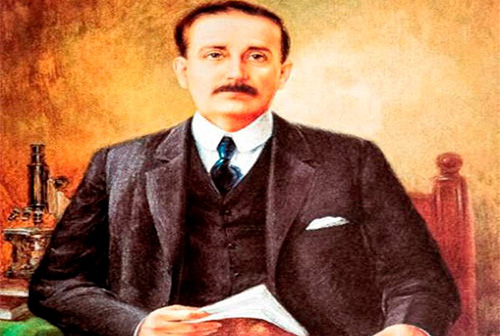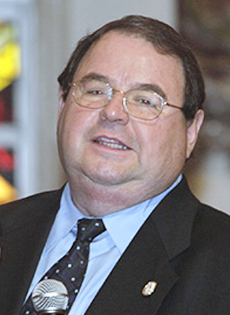
Venezuela's venerable Dr. José Gregorio Hernández
Monday, November 19, 2018
*Rogelio Zelada
The night grows long, and the intense cold does not let “Brother Marcelo” sleep, for the very short time that the austere rule of the Cartuja de Farneta devotes to nocturnal rest. The requirements of community life and the frugality of food have undermined his health so much that the prior of the monastery will force him to return to Caracas to recover before he completes nine months of living in the strict cloister – marked by penance, prayer and sacrifice – of the silent Order founded by St. Bruno in the 12th century.
José Gregorio Hernández returns to Venezuela on April 21, 1909 and manages to enter the Seminary of Santa Rosa de Lima. However, his longing for monastic life leads him to seek once again the closeness of convent life and he decides to better prepare for his later return to the monastery. He travels to Rome to pursue theological courses at the Pius Pontifical Latin American College, but the climate of the Eternal City causes a pulmonary disease that forces him to return to Caracas. He no longer attempts to enter religious life, as he clearly sees that his path and vocation is to embrace fully the life of the lay apostolate with his ministry in the field of medicine. That is where the Lord will challenge him to holiness, as a doctor at the service of God and his brothers and sisters, especially the poorest and neediest.

Venerable Dr. José Gregorio Hernández
In May 1909, he resumes his teaching at the University of Caracas, as professor of practical pathology and founder of the department of bacteriology.
Having received a scholarship from the president of the republic, he had studied at the University of Paris, where he specialized in microscopy, normal histology, pathology and experimental physiology. He later continued his histology studies in Berlin and expanded his knowledge of bacteriology. On his return to Venezuela from Paris, he brings new medical equipment to establish a physiological department at the Universidad Central de Venezuela (Central University of Venezuela). He is the one who introduces the use and knowledge of the microscope into Venezuelan scientific circles.
José Gregorio Hernández was born in the mountains of the Venezuelan Andes on October 26, 1864, in Inotú, a small town in the state of Trujillo. His father was Colombian and his mother a native of the Canary Islands, a very devout and deeply religious woman who died when José Gregorio was only 8 years old. He wanted to be a lawyer, but his father steered him towards medicine, a career that he embraced completely and in which he discovered a very effective means to help the poor and needy.
He began his studies at the prestigious Colegio Villegas in Caracas, where he was an extraordinary student. Reading was his best subject. Dedicated to the classics, he soon acquired an encyclopedic culture. His grades were excellent, so he received continuous accolades and awards. At 17, he entered the Universidad Central de Venezuela where he continued to achieve outstanding success and the faculty’s recognition as the best student of medicine. He also knew music, was fluent in English, French, Portuguese, German, Italian and Latin languages, understood Hebrew, and had a great knowledge of theology and philosophy. He was an affable man, slender, with an oval shaped face and a very light complexion. He had a clear and penetrating stare and his deep dark eyes always looked straight ahead, inspiring trust in all who approached him. He dressed formally, always in black, and wore a plain hat, an image that showed humility, nobility and sincerity while living the Christian virtues.
As an exemplary layperson, he participated in Franciscan spirituality and was devoted to the charism of the Poor One of Assisi. His teaching and professional activity were the best way to recognize in the sick the suffering Christ, whom he served with self-denial in his patients, without caring about the hours devoted to serving, healing and comforting them. Each day, as was his custom, José Gregorio woke up before five in the morning and after praying the Angelus he went to the nearby church of the Divina Pastora (Divine Shepherdess) for the Mass, where he received daily Communion.
The morning of June 29, 1919 was extremely cold. After leaving Mass and greeting everyone he met along the way, José Gregorio went to take care of the poorest patients in the neighborhood. He returned home at 7:30, had breakfast, and after tending to the patients of the day, went to the Asilo de Huérfanos de la Divina Providencia (Orphanage of the Divine Providence) and to comfort his patients at the Vargas hospital.
At noon, a neighbor went to the house of José Gregorio concerned about one of the doctor’s patients, a poor old woman who was very sick. The doctor immediately picked up the medical bag he always carried and went promptly to the patient’s house. Then, still in a hurry, he went to the nearby pharmacy to buy medicines, because his patient did not have the means or resources to obtain them. The apothecary immediately prepared the formula and handed it to the doctor who, in the rush to deliver the medicine, did not see a car taking the curve at full speed. The impact threw him into the air and his head hit the edge of the sidewalk. Before dying, he was only able to cry out, “Most Blessed Virgin!”
Well-known as a holy, devout, charitable, God-filled man, the people spontaneously began to make known his reputation for holiness. His tragic death touched and filled with pain all of Caracas’ circles. His wake could not be held at his home because of the huge confluence of people, and it was necessary to take his body to the auditorium of the Universidad Central, so that a large grateful crowd could express its admiration and give witness to the life of the holy doctor who had left for the Father’s House. The city was totally paralyzed during the funeral; the procession that had left for the cemetery at four o’clock in the afternoon could only reach the tomb at nine at night. A mountain of flowers covered his grave completely as a perfumed testimony of veneration.
Popular demand advanced the beginning of his cause for canonization, already started in 1949. In 1957, the process began to be carried out in the city of Havana, presided by the first Latin American cardinal, Manuel Arteaga y Betancourt, who as a young man had studied with José Gregorio Hernández in Caracas. In 1975, the remains of the Servant of God were transferred to the church of Nuestra Señora de la Candelaria. St. John Paul II solemnly recognized the heroism of his Christian virtues in 1986 and granted him the title of Venerable, the step before beatification. The only thing missing is the recognition of a miracle obtained through the intercession of Venerable José Gregorio.


Comments from readers